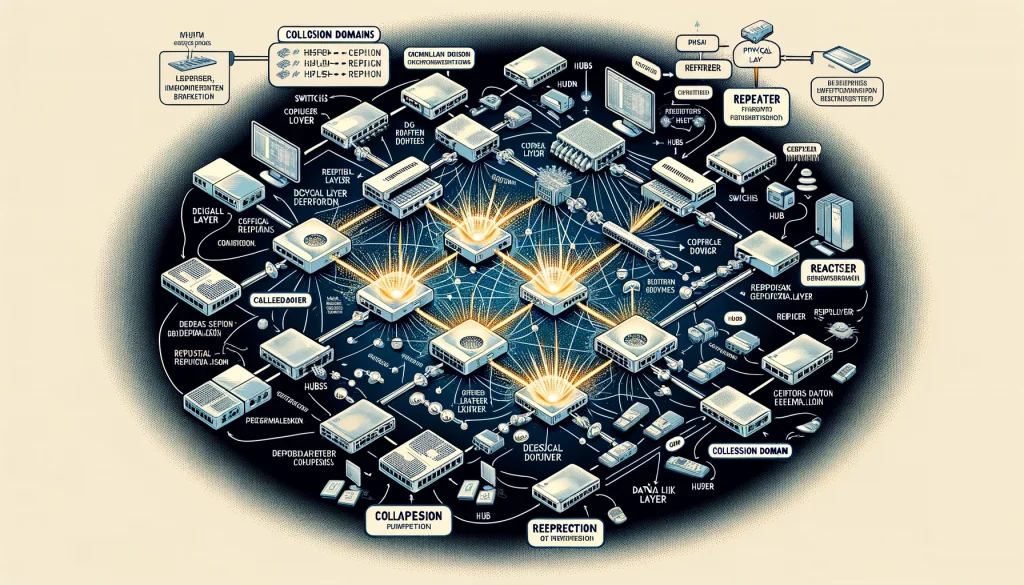In the vast landscape of networking, understanding the nuances of collision domains is crucial for optimizing performance and efficiency. At the heart of this discussion lie two fundamental network devices: repeaters and hubs. Let’s delve into their significance, functionality, and their impact on collision domains.
What is a Repeater?

According to Linfo.org, a repeater serves as a vital network device designed to regenerate or replicate signals that may become weakened or distorted during transmission over extended distances or through areas with high levels of electromagnetic interference. This functionality positions repeaters as essential components, particularly in scenarios where physical network limitations necessitate the bridging of distant network sections.
Both repeaters and hubs operate at the first layer, known as the physical layer, of the OSI model. They function transparently within the network infrastructure, devoid of any intelligent routing decisions. Instead, their primary purpose is signal amplification and distribution.
Collision Domains: Unveiling the Concept
A collision domain, as defined by Wikipedia, represents a network segment connected by a shared medium or through repeaters. Within this domain, data packets have the potential to collide with one another during transmission. This collision not only disrupts the seamless flow of data but also incurs a performance cost.
In essence, when utilizing repeaters or hubs, all connected devices share the same collision domain. Consequently, every collision within this domain affects the performance of the entire network. However, this scenario contrasts sharply with the functionality of switches.
Switches: Isolating Collision Domains
In contrast to repeaters and hubs, switches offer a more sophisticated approach to network management. Switches operate at the data link layer of the OSI model and possess the capability to isolate collision domains to each port on the switch.
By doing so, switches effectively mitigate the adverse effects of collisions, confining their impact to individual network segments. This segmentation optimizes network performance, particularly in environments with high traffic volumes or complex network architectures.
Practical Considerations and Recommendations
While repeaters and hubs present cost-effective solutions for extending network connectivity beyond physical constraints, their utilization comes with inherent limitations. For larger networks or environments with substantial data traffic, employing these devices may result in degraded performance and network congestion.
Therefore, it is advisable to explore alternative methods, such as switches, for interconnecting distant network segments. Switches offer superior performance and scalability, making them a preferred choice for modern network infrastructures.
In conclusion, understanding collision domains and the role of repeaters and hubs within network architectures is paramount for optimizing performance and ensuring seamless data transmission. While these devices serve specific purposes, their limitations underscore the importance of adopting advanced networking solutions tailored to the demands of contemporary IT environments.
References
- Repeater Definition. (n.d.). Retrieved September 01, 2016, from http://www.linfo.org/repeater.html
- Collision domain. (n.d.). Retrieved September 01, 2016, from https://en.wikipedia.org/wiki/Collision_domain






